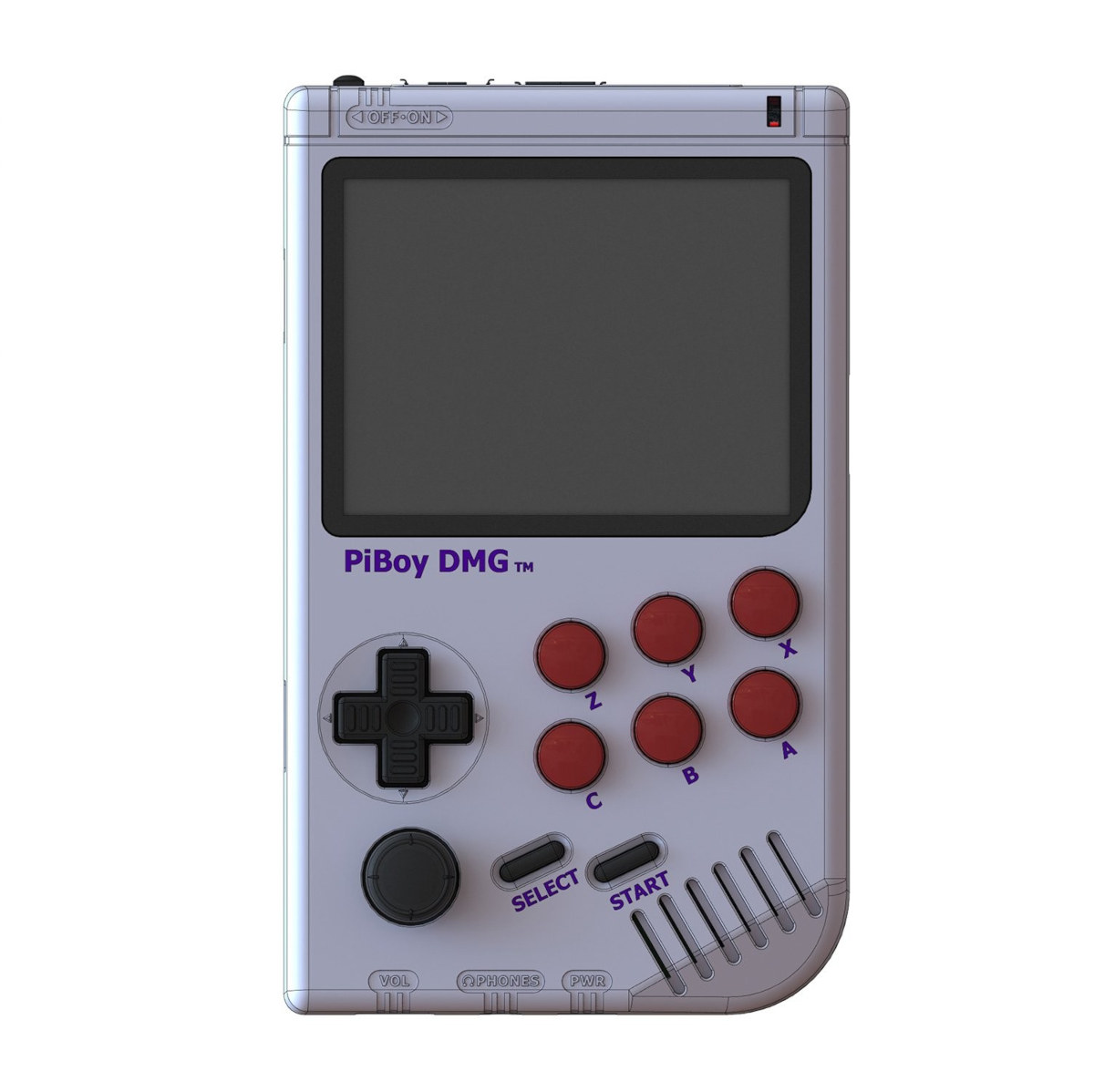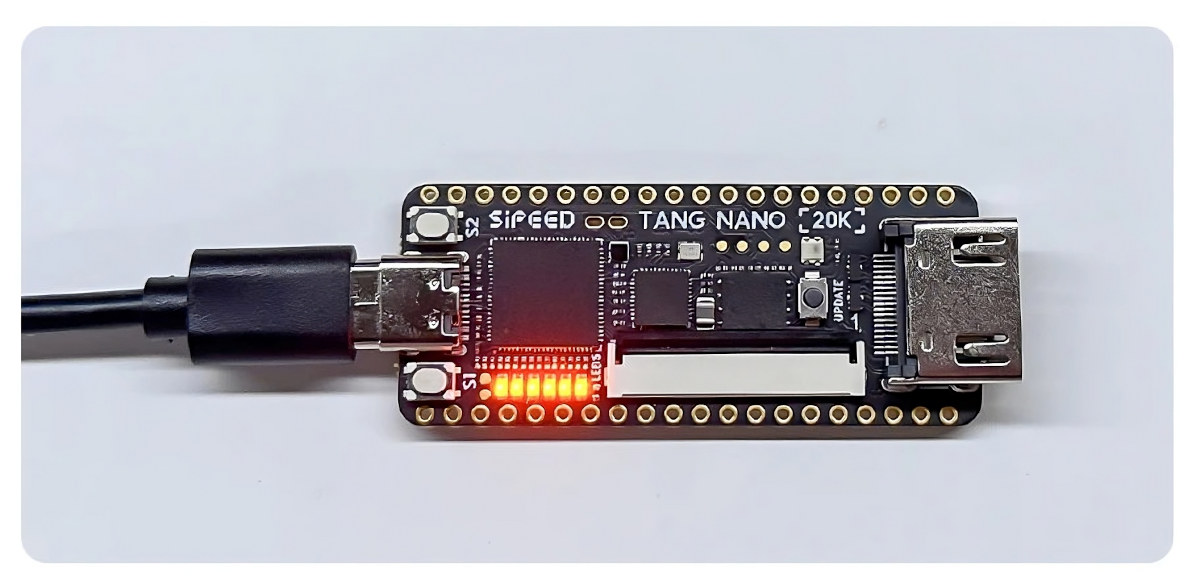Olimex RP2040pc is an inexpensive “all-in-one” computer board based on a Raspberry Pi RP2040 MCU with support for Apple //e, Apple ][+, and Oric Atmos emulation through the Reload emulator. The board features an HDMI port, stereo audio, four USB ports, and two UEXT expansion connectors. It’s not quite the first RP2040 retrocomputing board from Olimex, as they introduced the RP2040-PICO-PC in 2021 with an HDMI port, a 3.5mm audio jack, and a microSD card slot before launching the Olimex NEO6502, which combines a MOS6502 MCU for Apple II, Oric, and Commodore 64 emulators with an RP2040 for HDMI/DVI video output and a few other things. The RP2040pc is similar to the latter, but with more ports and features, and everything is handled by the Raspberry Pi RP2040 microcontroller. Olimex RP2040pc specifications: Microcontroller – Raspberry Pi RP2040 dual-core Cortex-M0+ MCU @ 133 MHz with 264 KB SRAM Storage – 16MB […]
ESP32 Rainbow is an open-source, ESP32-S3-powered ZX Spectrum single board computer (Crowdfunding)
Retrocomputing enthusiasts will be delighted to learn that a new ZX Spectrum replica is on the market: the ESP32 Rainbow. The single board computer swaps the Zilog Z80 for an ESP32-S3 microcontroller chip running an emulator, bringing the classic 80s computer back to life with a modern twist. It features a built-in color display, a microSD card slot for storage, a built-in touch keyboard in the ZX Spectrum style, and a USB Type-C port for power and data. The keyboard was recreated using full-color UV printing and is the most true-to-life component of the ESP32-S3-based ZX Spectrum single board computer. The touch keys won’t likely offer the best typing experience but that is reminiscent of the original ZX Spectrum. A lovely cherry on top is that the onboard USB-C port supports HID and the device can be used as a keyboard on another computer. The ZX Spectrum is one of […]
QEMU 9.0 released with Raspberry Pi 4 support and LoongArch KVM acceleration
QEMU 9.0 open-source emulator just came out the other day, and it brings on board major updates and improvements to Arm, RISC-V, HPPA, LoongArch, and s390x emulation. But the most notable updates are in Arm and LoongArch emulation. The QEMU 9.0 emulator now supports the Raspberry Pi 4 Model B, meaning you can run the 64-bit Raspberry Pi OS for testing applications without owning the hardware. However, QEMU 9.0 has some limitations since Ethernet and PCIe are not supported for the Raspberry Pi board. According to the developers, these features will come on board in a future release. For now, the emulator supports SPI and I2C (BSC) controllers. Still on ARM, QEMU 9.0 provides board support for the mp3-an536 (MPS3 dev board + AN536 firmware) and B-L475E-IOT01A IoT node, plus architectural feature support for Nested Virtualization, Enhanced Counter Virtualization, and Enhanced Nested Virtualization. If you develop applications for the LoongArch […]
Make a Raspberry Pi 5 Game Boy lookalike with the PiBoy DMGx handheld gaming console kit
Experimental Pi’s PiBoy DMGxis is a kit that converts the Raspberry Pi 5 into a handheld gaming console that looks like a Game Boy with a 3.5-inch color display and all the controls found on the original Game Boy. The company has launched several PiBoy portable game console kits for Raspberry Pi SBCs over the years, so the new PiBoy DMGx for the Raspberry Pi 5 should come as no surprise, and the company says it should be able to run emulators for N64, PSP, Dreamcast, Wii, Gamecube, PS2, and others. PiBoy DMGx kit specifications: Supported SBCs – Raspberry Pi 5; with adapters: Raspberry Pi 3 and 4 Storage – MicroSD card slot (11) Display – 3.5-inch display with 640 x 480 resolution (3) Video Output – Micro HDMI port from RPi 5 Audio – Speaker (5), 3.5mm audio jack (7) User inputs – D-Pad (10), analog stick (9), […]
Olimex ESP32-SBC-FabGL board runs DOS, offers VGA , PS/2 keyboard and mouse connectors
Olimex ESP32-SBC-FabGL is an ESP32 single board computer that can serve as the brain of a retro computer with a VGA port, a 3.5mm audio jack, and two PS/2 ports for a keyboard and mouse that are handled by the open-source FabGL graphics library. The board also comes with a microSD card slot, a buzzer, and various expansion interfaces, and can be powered via its USB port or a LiPo battery. FabGL implements several emulators including an Intel 8080 CPU emulator that allows the system to run various versions of DOS among other things. ESP32-SBC-FabGL specifications: Wireless module – ESP32-WROVER dual-core WiFi and Bluetooth module with 4MB flash, 8MB PSRAM Storage – MicroSD card slot Display – VGA connector, 12-pin LCD HAT connector to enable handheld designs Audio – 3.5mm audio jack, built-in buzzer USB – 1x USB-C port for power and programming User inputs – PS2 keyboard connector, PS2 […]
$25 Sipeed Tang Nano 20K FPGA board can simulate a RISC-V core, run Linux, retro games
The Sipeed Tang Nano 20K is a low-cost FPGA development board based on Gowin GW2AR-18 FPGA with 20,736 logic cells and 64Mbit RAM, which coupled with 64MBit QSPI flash provides enough resources to simulate a 32-bit RISC-V core booting Linux or playing retro games in an emulator. The FPGA board comes with a USB-C port for power and to load the FPGA bitstream through a BL616 microcontroller that also acts as a USB to serial chip, an HDMI port and an RGB LCD interface for video output, two user buttons, and two rows GPIOs to connect peripherals such as gamepads (through adapters). Sipeed Tang Nano 20K specifications: FPGA – Gowin GW2A-LV18QN88C8I7 with 20,736 logic units (LUT4) 15,552 flip-flops (FF) RAM 41,472 shadow SRAM (S-SRAM) 828K block SRAM (B-SRAM) Numbers of B-SRAM – 46 64Mbit 32-bit SDR SDRAM 48x 18×18 multipliers 2x PLLs 8x I/O Bank Onboard debugger – Bouffalo Labs […]
Android RISC-V progress update, emulator support, and roadmap to 2023
We’ve first covered Alibaba T-Head work on Android 10 for RISC-V in January 2021, and later that year they started selling the T-Head RVB-ICE dual-core RISC-V board with GPU for software development. The company has now provided an update for Android 12 RISC-V port, instructions to build Android RISC-V to run it in an emulator, as well as a 2022-2023 roadmap. Alibaba T-head is working on hardware platforms, which appears to be similar to T-Head RVB-ICE board, with the following minimal specifications: CPU – At least Dual-core XuanTie C910 (rv64imafdcv) processor GPU – Compatible with OpenGL ES and OpenCL VPU – HW Video/Picture codec Neural Network Accelerator System Memory – 4GB or more DDR Memory Display – MIPI/HDMI Audio – Multi-Channel Audio output & input Camera – ISP with support for multiple MIPI CSI lanes USB interface(s) They built upon the work done on Android 10 to add support for […]
QEMU 7.0 released with support for RISC-V KVM, Intel AMX, and more
QEMU (Quick EMUlator) is an open-source emulator used to run OS or programs on various architectures such as Arm, RISC-V, and many others when you don’t own specific hardware, or for quick testing. The developers have released QEMU 7.0 a few days ago with over 2500 commits from 225 developers. New features include support for RISC-V KVM and vector extensions, Intel AMX (Advanced Matrix Extension), improved flexibility for fleecing backups, various new features for Arm, and many more. QEMU 7.0 highlights listed by the developers: ACPI: support for logging guest events via ACPI ERST interface virtiofs: improved security label support block: improved flexibility for fleecing backups, including support for non-qcow2 images ARM: ‘virt’ board support for virtio-mem-pci, specifying guest CPU topology, and enabling PAuth when using KVM/hvf ARM: ‘xlnx-versal-virt’ board support for PMC SLCR and emulating the OSPI flash memory controller ARM: ‘xlnx-zynqmp’ now models the CRF and APU control […]










